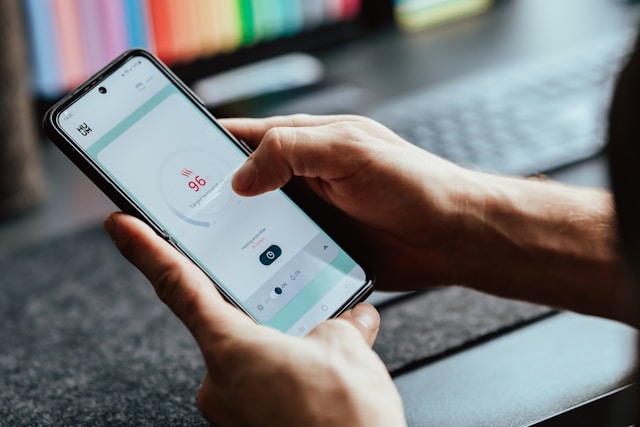Understand Why iPhone 14 and iPhone 15 Overheat: Addressing the iPhone Heating Issue
- Intensive Processor Activities and the iPhone Heating Issue
iPhone Heating Issue – Utilizing applications or features that require substantial processing power, such as high-end games, video streaming, or augmented reality apps, leads to increased workload on the CPU (Central Processing Unit) and GPU (Graphics Processing Unit). This results in greater heat production, which is transferred to the phone’s casing, causing the iPhone to feel warm to the touch.
- Charging Process Contributing to iPhone Heating
The process of charging your iPhone, especially while using it for demanding tasks like navigation or gaming, can generate significant heat. This is due to the battery warming up during charging, and simultaneous use of the phone adds extra thermal stress, exacerbating the iPhone heating issue.
- Environmental Conditions and iPhone Overheating
Exposing your iPhone to high ambient temperatures, direct sunlight, or leaving it in a hot car can lead to overheating. iPhones are engineered to operate within specific temperature ranges, and exceeding these limits compels the device to exert more effort in regulating its temperature, contributing to the iPhone heating issue.
- Faulty Batteries or Hardware Causing iPhone Heat
A malfunctioning battery or defective hardware components can also be culprits of excessive heating. If the battery is compromised, it may overheat during charging or usage. Likewise, damaged internal components can cause the iPhone to operate inefficiently, leading to increased heat output.
- Software Issues Leading to iPhone Overheating
Software glitches or bugs can contribute to your iPhone overheating. If an application or the iOS itself is malfunctioning, it may impose additional strain on the processor, causing an uptick in heat production. Outdated applications or iOS versions can further aggravate the iPhone heating issue.
Preventive Measures for iPhone Heating Issue
To mitigate the risk of your iPhone overheating, adopt these strategies:
- Avoid heavy app usage in warm environments.
- Remove the phone case during charging if the device becomes overly warm.
- Regularly update iOS and applications to address software-related heating concerns.
- Prevent exposure to direct sunlight and avoid leaving your iPhone in hot conditions for prolonged periods.
If your iPhone consistently overheats without an apparent reason or becomes uncomfortably hot, seeking assistance from Apple support or an authorized service provider is advisable to eliminate any hardware problems.
How to Protect Your iPhone from Overheating
- Limit Resource-Intensive Apps to Avoid iPhone Heating
Minimize the use of high-demand applications, such as gaming or video editing software, to prevent your iPhone from overheating. Closing these apps when not in use can reduce the load on your device’s processor and battery.
- Update iOS and Apps to Address iPhone Heating Issue
Ensure your iPhone and all installed apps are up to date. Updates often include bug fixes and performance enhancements that can help resolve overheating problems.
- Optimize iPhone Settings to Prevent Heating
Adjusting your screen brightness and disabling Background App Refresh for non-essential apps can significantly decrease your iPhone’s workload, thus reducing heat generation.
- Avoid Direct Sunlight to Protect iPhone from Overheating
Keeping your iPhone away from direct sunlight and heat sources can prevent it from becoming too hot, safeguarding against rapid overheating.
- Manage Charging Practices to Reduce iPhone Heat
Refrain from using your iPhone while it charges, especially during intensive tasks. Employing an original or certified charger can ensure efficient charging without contributing to overheating.
- Clear Storage and RAM to Prevent iPhone Overheating
Regularly removing unnecessary apps and files frees up storage space and RAM, facilitating smoother device operation and preventing overheating due to overloaded memory.
- Reset Settings or Restore iPhone for Heating Issues
If overheating persists, resetting all settings may resolve underlying software issues causing the device to overheat. If necessary, restoring your iPhone to factory settings could be considered, but ensure to back up your data beforehand.
- Use of Quality Cases for iPhone Heat Management
Some protective cases can trap heat. Opting for a case made from heat-dissipating materials can help maintain a cooler iPhone.
- Seek Professional Assessment for Persistent iPhone Heating
Should these measures fail to alleviate the problem, it might indicate a hardware issue, necessitating professional evaluation from an authorized service provider.
Adhering to these guidelines can effectively diminish and resolve heating issues with iPhones, enhancing both the device’s performance and its longevity.













